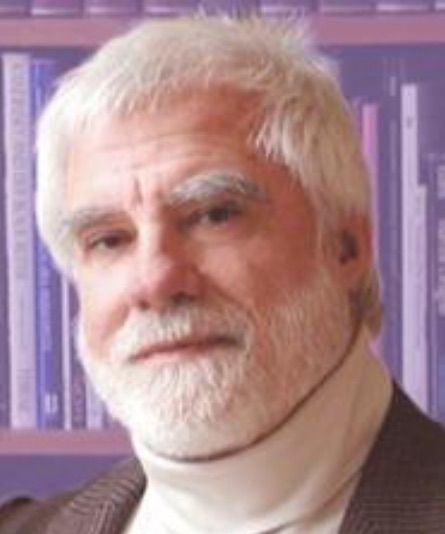
By André Fauteux, Editor
La Maison du 21e siecle magazine maisonsaine.ca/english
A pioneer in home automation since 1983 and founder of CyberLYNX Gateway Corp, Timothy Schoechle has been in the communications and computer engineering fields since the mid-1970s and engaged in standardization since the early 1980s in a variety of both expert and leadership roles. Dr. Schoechle played pioneering roles in such technologies as microprocessors, home networks, barcodes, Radiofrequency identification (RFID), Voice over Internet Protocol (VoIP) and energy systems. His main activity is as a consultant, advising governments, organizations, and law firms on standards policy and patent issues.
He has a PhD in Communication Policy and is active in various international standards educational and research initiatives including the biennial SIIT conference (Standardization and Innovation in IT) and an international journal on standards research. He presently serves as Secretary of the ISO/IEC (International Standards Organization and International Electrotechnical Commission) Committee on Home Electronic Systems and Home Automation since 1990, and has served for a decade until 2016 as Secretary of ISO's Data Management and Interchange committee. He notably developed undergraduate and graduate level courses related to Information Technology cyber-security and privacy at the Colorado State University-Global Campus. He also served on the University of Colorado, Boulder, College of Engineering faculty, teaching one of the few standards courses in the world and serving a key role in founding its standards research center.
We reached him by phone at his home in Boulder.
AF : Many people believe smart meters will favor energy efficiency and renewables. Do you agree and why?
TS : No, I don't how they would. It's a big myth. Smart meters are not useful for much but they allow utilities to cut operating costs. Investor-owned utilities make money by spending money because public utility regulatory commissions allow them to get a 10-12% return on capital through electric rate hikes. About 60% of utilities in North America are investor-owned and get regulated earnings mostly by building capital equipment. These days the need for generating capacity and transmission lines is declining so they try to invest in capital projects like distribution and meters.
A scientist tells me since the smart grid will only be used to about 5% of its capacity to relay data on electrical consumption, utilities may use it to provide phone and video services. Is this true?
That depends on what you mean by "smart grid". If you are talking about wireless metering networks, the answer is "no". I don't see that happening. Some municipally-owned utilities are putting in fiber networks, so the answer could be "yes" for internet access. Powerline-carrier systems to distribute cable services never worked, it's not a technology that was very successful.
Are fiber optics the future?
Yes. I'm writing paper called "Reinventing wires: the future of landlines and networks" on the economic and social benefits of high-speed public (municipally-owned) fiber networks. We don't need all these 5G wireless networks because they are much more expensive than fiber. And that's why utilities and the telecom industry want to build them: to make a profit. They have to do this every 10-20 years — reinvent new generations of technology — to be successful, otherwise they go out business. It's called planned obsolescence: your old phone doesn't work with the new technology because they want sell you new phones.
I recommend deploying local fiber-optic networks everywhere. All municipalities in North America should put their own fiber networks in. They would save a lot of money on Internet access. The smart grid has always been confused with smart meters but they are not related. The original idea of the smart grid was to use information to better control the generation, transmission and distribution of power. This is still a good idea and fiber is best to transmit data.
How does the Internet of Things (IoT) fit into all of this?
The IoT is all about selling more chips and software to make everything dependent on network services, but we don't need to do that. We can benefit from home automation if it's used to manage energy within a home or building or in the local neighborhood grid, called micro-grids. However, the big promotion these days seems to be more wireless devices connecting directly to the Internet. That's an invitation for disaster in terms of security against hacking. Utilities don't know anything about how to do it. I'm working on standardization of communication technologies for residential gateways dedicated to assuring premises security and safety (fire, physical, health) and they will benefit privacy too. Home automation is not necessarily wired or wireless, but there are new opportunities to reduce the use of wireless which suffers from severe security, health/safety and privacy flaws.
When and where will your article be published?
It's for the National Institute for Science, Law and Public Policy and Camilla Rees is managing its publication. We're hoping for this Spring. They published my previous paper, Getting Smarter about the Smart Grid.
So smart meters are not about green energy after all?
No, that's a scam — it's not true. They don't help manage energy problems. The flow of information is in the wrong direction: it should be from the outside to inside the house, but meters go the other way. The house needs to know the condition of supply and demand on the grid to use electricity wisely. The energy needs to be controlled where it is produced and stored but especially where it is used — that is in the home or building. Energy needs to be controlled on the premises or nearby rather than in a remote large transmission or generation facility.
Who agrees with your version of the future? Amory Lovins of the Rocky Mountain Institute has long said the future was in micro-grids and localized power production.
Amory Lovins certainly agrees as well as the entire solar industry. Elon Musk (of Solar City and Tesla fame) agrees with me. The idea behind Musk's business is producing power on the premises with solar panels and storing it in wall-mounted batteries or in electric cars. Matching power storage with solar production solves the biggest problems utilities have. [At the same time, Musk wants to launch 4,000 satellites in space to offer faster and more reliable wireless internet services which will increase global exposure to microwave radiation.]
Every major investment bank in the world also agrees with this vision. I wrote a paper on the Hudson Valley (NY) Transmission Project1 that carried projections for solar and solar-plus-storage. The International Energy Agency and bank studies showed that in 10-20 years, all new power generation will be solar. Big power plants no longer make sense economically. In the beginning, energy was capital intensive — you needed large economies of scale. But if you go solar with inherent local distribution, there are no more economies of scale because you can put micro-grids everywhere at any scale.
What do you know about the health effects of radiofrequency electromagnetic fields (RF EMFs) generated by wireless networks?
I see new evidence, such as research by scientists at the University of Colorado in Boulder, headed by Distinguished Professor of Electrical and Computer Engineering, Frank Barnes. They found mechanisms to establish biological effects of EMFs. There are ample reasons to believe there are negative health effects that needs to be investigated before major investments are made in major wireless networks. [Read the article Barnes coauthored which was published in March 2016 in IEEE Power Electronics magazine.] The National Toxicology Program's study on cell phones and cancer provides more evidence this needs be looked at and that we need to show more caution in the deployment of millimeter waves. The 5G wireless industry has a lot of economic power behind it, with Verizon, Comcast and AT&T. They stand to make great money off of 5G wireless.
The constituency for the fiber optics and copper industries mean wired technologies have taken it far beyond with new standards for Ethernet transmission with Local Area Networks at 40 gigabits per second within a building. It's a new version of Ethernet which includes DC [Direct Current] power distribution and a new generation of USB [Universal Serial Bus]. This is called Power-over-Ethernet (POE) and was originally intended to power wireless access points, but could actually power anything. At ISO/IEC, we like the idea of a residential gateway to allow use of these high speed networks already in the market, and to assure IoT security, privacy, and health/safety.
It's cheaper to take fiber optics to buildings than wireless — or have the last short hop hook up with copper. Ethernet is a better system with higher performance and much faster speeds than wireless. Longmont, Colorado had a new municipal fiber system put in by its municipally-owned power company. It serves 100,000 people at 1 Gigabit/second speed for a very low cost. It could be done everywhere, that's the future. Chattanooga, Tennessee also has optical fiber to every home and business (150,000 customers) installed by its municipal utility.



